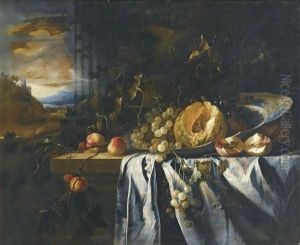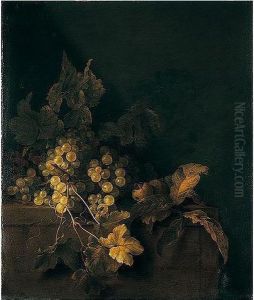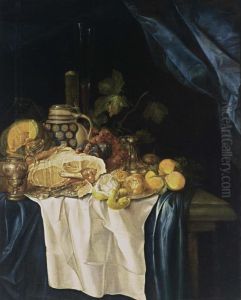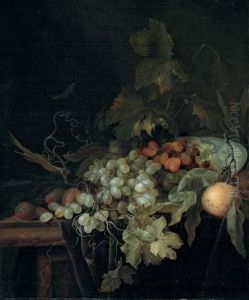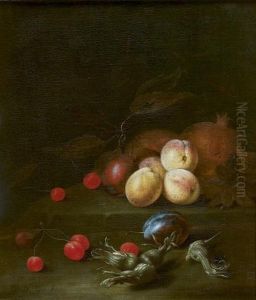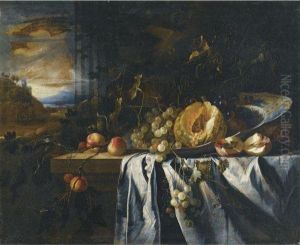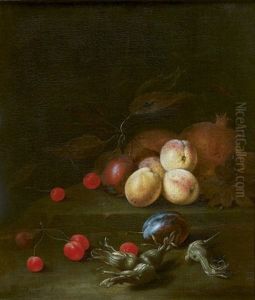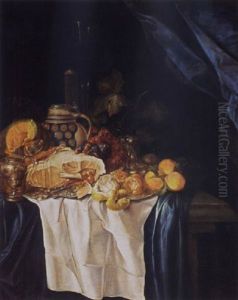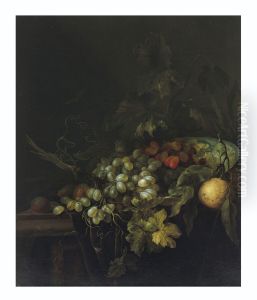Gregorius De Coninck Paintings
Gregorius De Coninck, born in 1644 in Antwerp, was a Flemish Baroque painter who specialized in still lifes, particularly flower pieces, which were highly esteemed during the 17th century. His work is characterized by a meticulous attention to detail, a rich palette, and a deep understanding of the textures and forms of flowers and foliage. De Coninck's artistic journey was deeply rooted in the rich artistic tradition of Antwerp, a city renowned for its vibrant art scene and as a hub for the exchange of artistic ideas across Europe.
Despite the scarcity of biographical details about De Coninck's life, it is known that he was active in Antwerp's Guild of St. Luke, an association of artists, from the mid to late 17th century. This period was marked by a flourishing of still life painting, with artists exploring the genre with unprecedented depth and expertise. De Coninck's contributions to this genre were significant, and his works were sought after by collectors and patrons, reflecting the high regard in which he was held.
De Coninck's still lifes are remarkable for their vivid realism and intricate composition. He had an exceptional ability to depict the natural world, from the delicate petals of flowers to the nuanced surfaces of fruits, with an almost scientific accuracy. His paintings often feature a rich array of flowers, including roses, tulips, and irises, set against a dark background that serves to highlight the luminosity and vibrant colors of the floral arrangement. This technique not only demonstrates De Coninck's skill as a painter but also reflects the contemporary fascination with botany and the natural world.
Gregorius De Coninck's work also embodies the Baroque era's broader themes, such as the transience of life and the beauty of nature, themes that were commonly explored through the still life genre. His paintings invite contemplation, serving as a reminder of the fleeting nature of life and the enduring beauty of the natural world. Despite his death in 1700, De Coninck's legacy endures through his contributions to the development of still life painting in the Flemish Baroque tradition. Today, his works are preserved in various museums and collections, where they continue to be appreciated for their beauty and historical significance.
